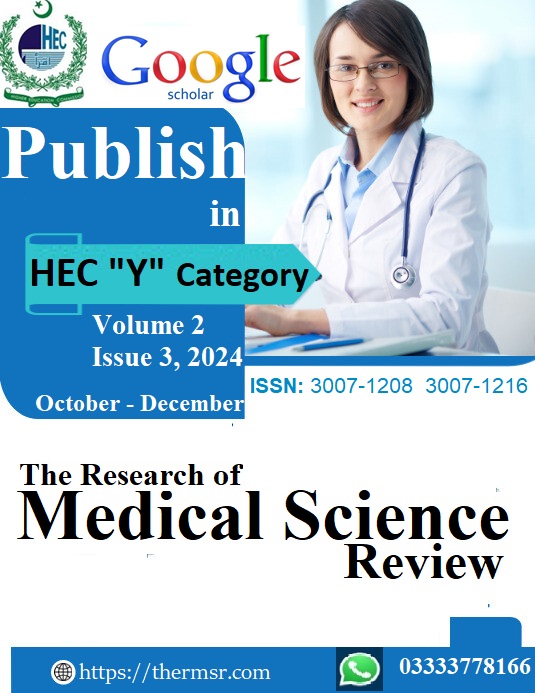FREQUENCY OF URINARY TRACT INFECTION IN NEONATES WITH JAUNDICE
Keywords:
Jaundice, Urinary Tract Infections, NeonatesAbstract
Background: Neonates are frequently hospitalized in healthcare facilities across the world due to indirect neonatal hyper bilirubinemia, a common and frequent cause of jaundice. Neonatal jaundice, which can be physiologic or related to several underlying diseases such as urinary tract infections, is frequently observed in both term and preterm newborns.
Objective: This study was conducted to find out the incidence of urinary tract infection in neonates with jaundice.
Materials and Methods: This cross-sectional study was conducted at the Department of Paediatrics, Lady Reading Hospital Peshawar from July 2024 to December 2024. Total of 150 neonates with jaundice who appear to have yellow skin or eyes participated in this study. Basic demographic information was obtained from the patients, such as age, gender, duration of complaint, and weight as measured on a weighing scale. The data of the laboratory testing that includes blood culture, urine analysis, c-reactive protein (CRP), complete blood count, serum total, direct bilirubin, direct Coombs test and urine culture was gathered. Midstream urine samples were taken aseptically and were analyzed. The statistical software SPSS version 21.0 was used to analyze the data.
Results: The study comprised 150 newborns in total. Of them, 95 (63.3%) were male and 55 (36.6%) were female. With a mean age of 22.5 ± 6.5 days, the patients in this study ranged in age from 16 to 29 days. The mean weight was 2.900 ± 0.30 kg, and the mean period of complaint (jaundice) was 19.20 ± 6.055 days. Among 150 neonates with jaundice, 20 (13.3%) neonates were positive for urinary tract infection.
Conclusion: Our study indicates that urinary tract infections are present in a considerable proportion of jaundice patients. Therefore, it is possible that urinary tract infections contribute to the development of jaundice in newborns. Neonates with jaundice should therefore be screened for urinary tract infections (UTIs).
Downloads
Downloads
Published
Issue
Section
License

This work is licensed under a Creative Commons Attribution-NonCommercial-NoDerivatives 4.0 International License.














